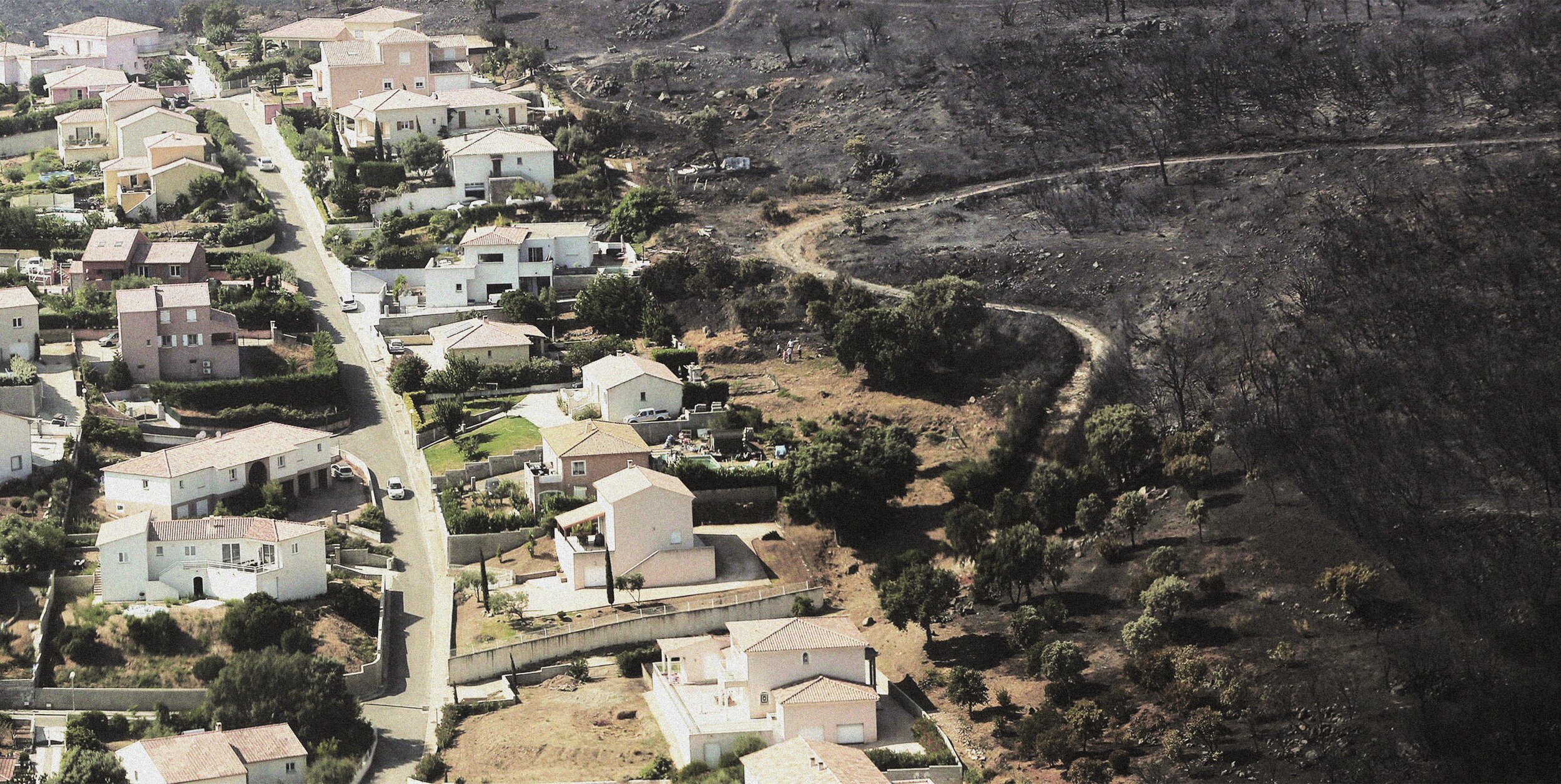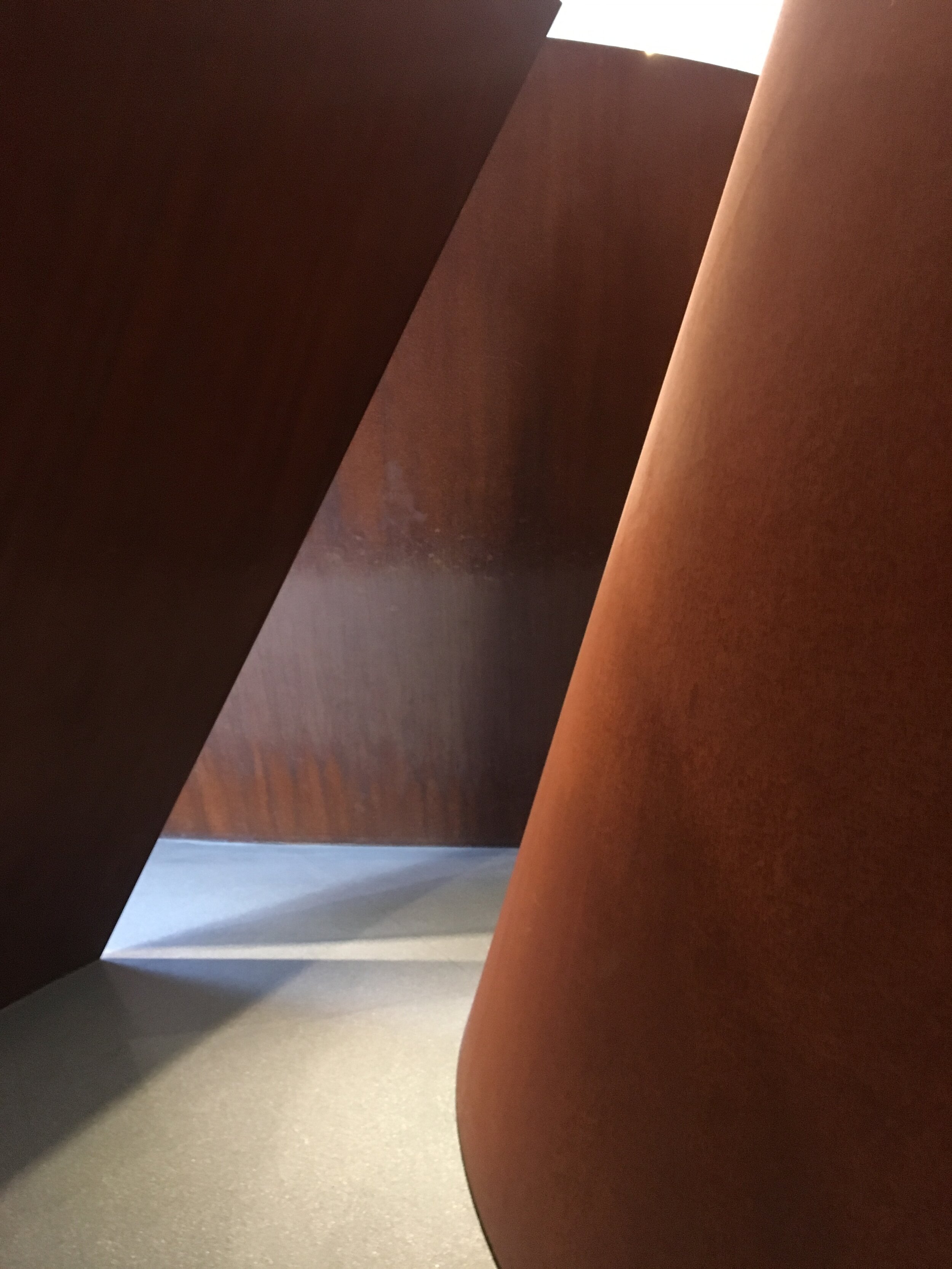Environmental (Un)control
Atmospheric refuge in a new urban crisis
by Caroline Chen

The wildland-urban interface Image courtesy of Getty Images
The Camp Fire, which tore through the rural towns of Paradise and Concow, California, in 2018, caused unprecedented levels of compromised air quality in the Bay Area and a public health emergency. Media depictions of the Camp Fire and its aftermath interlaced with a static blanket of haze over the San Francisco skyline. Although San Francisco is a three-hour drive from Paradise, the wildfire made immediate and evident the regional entanglement between the urban center of the Bay Area and its rural fringes. Urban pollution, instigated by the wildfire, induced a temporary state of atmospheric terror and, with increasing occurrences of wildfire, this condition is no longer exceptional. The term “smoke wave” was coined in a 2016 journal article in Climatic Change1 and describes a span of at least two days where air quality is compromised by the presence of wildfire generated particulates, specifically PM2.5s, which are fine particulates prone to absorption within the human bloodstream. Given that smoke waves are now relatively frequent environmental events in California, indoor, climate-controlled public spaces can play a new, crucial role in the built environment as places of periodic environmental refuge. If we acknowledge and accept this new role for indoor public space, architecture has the potential to expand its responsibility as a driver of environmental management.

Sequence by Richard Serra in SFMOMA, Image courtesy of Bradley Tomy
“MUSEUMS AS ATMOSPHERIC REFUGE
Within the City of San Francisco’s recommended list of temporary clean-air refuges, libraries and museums are cited as public facilities with robust climate control systems. Art museums, specifically, maintain stringent systems of environmental control to preserve collection materials.”
THEORIES OF ENVIRONMENTAL CONTROL
In Manhattan Atmospheres: Architecture, The Interior Environment, and Urban Crisis,2 David Gissen invokes the political dimensions of control and social attitude to critically examine climate control in late-modern New York. Gissen’s argument that architecture is a tool by which to maintain subjects and objects under externalized environmental pressure is relevant to how the function of architecture can be interpreted in the smoke wave-threatened Bay Area. Throughout his specification of subnatures3—obstructions to the traditional existence of architecture—the phenomenon of a smoke wave falls between atmosphere and matter. It is both a territorially enveloping threat and exists within a microscopic material dimension displaced from far-off catastrophe. If the late-modern buildings of New York were intended to resolve the atmospheric threats of an industrial city, how then can these attitudes transition under present environmental crises in cities such as San Francisco? (continues…)
Environmental (Un)Control was originally printed in Issue 09:ONWARDS.
________________________________________
Caroline Chen is an architectural designer pursuing her MArch degree at UC Berkeley.